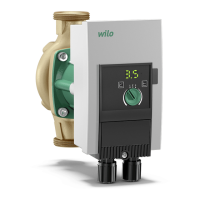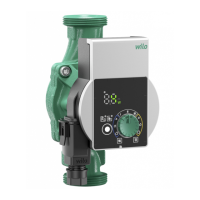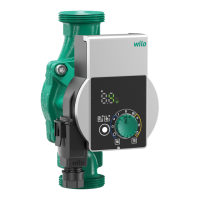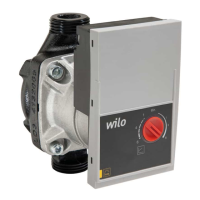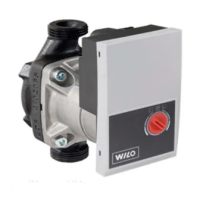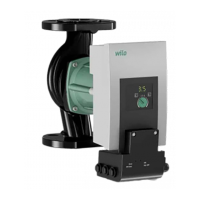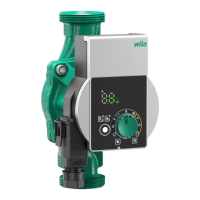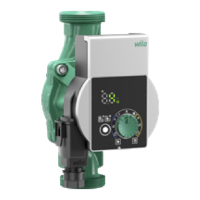English
38 WILO SE 05/2017
10.1 Fault signals
Faults always result in the activation of the “collective fault signal” (SSM) via
arelay
.
The response of the pump depends on the type of fault (see process diagram and
table 10.1).
Process diagram of the temporal response of the pump in the event of a fault
Explanations regarding the fault process
(ts) Fault present:
Start time of the fault process
(tr) Response time:
Time until the fault is detected
(ta) Delay time:
Time until the pump starts again; for restart times see table 10.2
(n) Occurring fault:
Number of repeated faults
(Tar) Time for restart attempts:
Time resulting from repetitions of the restart for as long as the fault is present. “Tar” can
be 0 seconds if the fault only occurs once (n=1).
(N) Allowed number of faults:
If there is a restricted fault rate, the counter is only reset if a fault no longer occurs within
30 seconds (tn). Otherwise the mains voltage must be disconnected for >30 seconds in
order to restart the pump.
Auto reset:
Yes: the number of allowed faults is unrestricted. The software ensures a restart of the
pump after the delay time.
No: the number of allowed faults is restricted. The pump can only be restarted if the
mains voltage is disconnected for >30 seconds.
(Tr) Total duration of SSM activity:
Duration of the operating fault of the pump; the SSM contact is open
› Waiting time to check whether a new fault follows.
œ Pump runs again in the normal operating mode,
(tx) Fault is remedied; SSM is closed
Pump status
0 = off / 1 = on
SSM status
0 = not active (closed) /
1 = active (open)
ts
n=1 n=2 ... n < N
0
1
tn
tatr Tar = (n-1)x(tr+ta) (30s)
tx
Time (t)
1
ts
0
1
tn
tatr
Tr
Tar = (n-1)x(tr+ta) (30s)
tx
Time (t)
2
